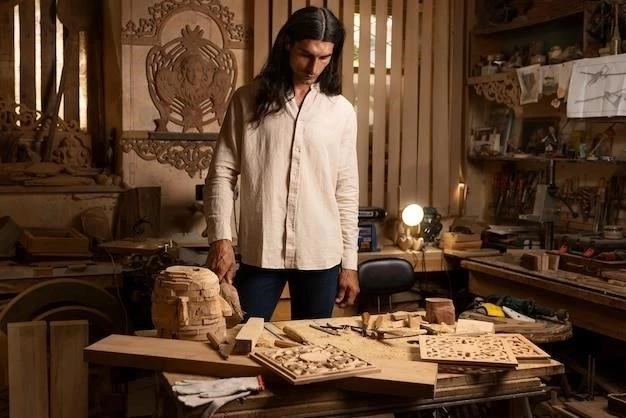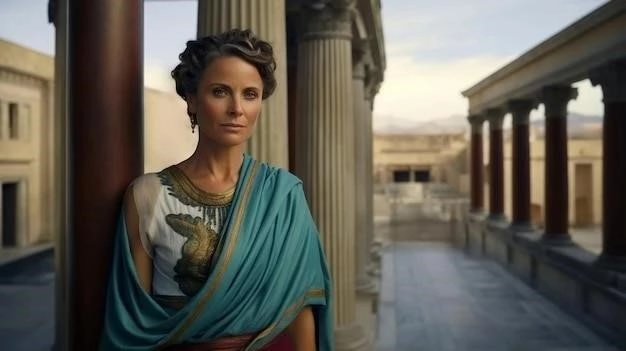The History of Fashion: From Ancient Garments to Modern Trends
Fashion, a powerful form of self-expression and societal reflection, boasts a rich history spanning millennia. From the rudimentary garments of antiquity to the cutting-edge designs of the 21st century, clothing has served as a canvas upon which humanity paints its cultural values, aesthetic ideals, and technological advancements. This exploration delves into the fascinating evolution of fashion, charting its course through significant eras and highlighting the key factors that have shaped its captivating narrative.
*
Ancient World: Functionality Meets Symbolism (Prehistory ⸺ 5th Century AD)
In the ancient world, clothing served a primarily functional purpose: protection from the elements and potential hazards. Early humans fashioned garments from natural materials like animal hides, furs, and leaves. As civilizations developed, so too did their textile production and garment construction techniques.
- Ancient Egypt (c. 3000 ⸺ 30 BC): Known for their linen production, Egyptians favored light, draped garments suited to the hot climate. While commoners wore simple tunics, the elite adorned themselves with elaborate jewelry, headdresses, and intricately pleated garments.
- Ancient Greece (c. 800 ⸺ 146 BC): The Greeks prized aesthetics and draped unstitched fabric into elegant garments like the chiton, peplos, and himation. They favored natural fabrics like linen and wool, often embellished with decorative borders and patterns.
- Ancient Rome (c. 753 BC ─ 476 AD): Roman clothing reflected their structured society. The toga, a voluminous draped garment, signified citizenship and social standing. Tunics remained common for both genders, while women wore stolas, a long, draped overdress.
Throughout these ancient civilizations, clothing served as a powerful indicator of social hierarchy, occupation, and marital status. Elaborate textiles, vibrant colors, and intricate jewelry often distinguished the elite from commoners.

The Middle Ages: Religion and Social Stratification (5th ─ 15th Century)
The Middle Ages witnessed the rise of Christianity, significantly impacting fashion. Garments became more modest, covering the body more extensively. Social hierarchy continued to dictate clothing choices, with sumptuary laws regulating fabrics and styles permitted to different classes.
- Byzantine Empire (c. 330 ─ 1453 AD): Influenced by Roman and Eastern aesthetics, Byzantine fashion featured luxurious fabrics like silk and velvet. Elaborate embroidery, jewelry, and headwear were prominent, particularly among the wealthy.
- Gothic Period (c. 12th ⸺ 16th Century): This period saw the emergence of tailored garments and the use of buttons. Men’s tunics became shorter, while women wore long gowns with fitted bodices and flowing skirts. Pointed shoes, elaborate headdresses, and extravagant jewelry characterized the period.
Guilds, established during the late Middle Ages, played a crucial role in standardizing garment production and regulating quality. New textile technologies and trade routes introduced diverse fabrics and dyeing techniques, enriching the fashion landscape.

The Renaissance: Rebirth and Individuality (14th ⸺ 17th Century)
The Renaissance marked a period of cultural and artistic resurgence, reflected in the evolution of fashion. Humanism emphasized individuality, leading to a greater focus on personal adornment and self-expression through clothing.
- Italian Renaissance (c. 14th ⸺ 16th Century): Italian city-states became centers of fashion innovation. Garments featured elaborate slashing, puffing, and intricate embroidery. The use of rich fabrics like velvet, brocade, and lace became increasingly popular.
- Elizabethan Era (1558 ⸺ 1603): Queen Elizabeth Is reign in England ushered in an era of opulent fashion. Women wore elaborate gowns with stiffened bodices, low necklines, and voluminous skirts supported by farthingales. Ruffs, large collars made of lace or linen, became a defining feature.
The invention of the printing press during this period facilitated the spread of fashion trends through illustrations and costume books. Exploration and trade with the New World introduced new fabrics and dyes, further diversifying clothing choices.

The Enlightenment and Beyond: Revolution, Industrialization, and Globalization (18th Century ─ Present)
The 18th century witnessed significant societal and technological transformations that profoundly impacted fashion. The Enlightenment emphasized reason and simplicity, reflected in the neoclassical styles of the late 18th century. The Industrial Revolution revolutionized textile production, making clothing more accessible to the masses.
- 18th Century: The Rococo period (early 18th century) embraced extravagance and opulence in fashion, while the latter half saw a shift towards simpler, more streamlined silhouettes inspired by classical antiquity. The French Revolution (1789-1799) further challenged established fashion hierarchies.
- 19th Century: The Victorian era (1837-1901) saw the rise of mass production and the growth of the middle class. Womens fashion featured elaborate gowns with crinolines and bustles to create a fashionable silhouette. The invention of the sewing machine in the mid-19th century further revolutionized garment production.
- 20th Century: The 20th century witnessed a dramatic acceleration in fashion trends. Modernism, fueled by technological advancements and social change, led to the rejection of restrictive clothing. Designers like Coco Chanel and Christian Dior revolutionized womens fashion, introducing simpler silhouettes and groundbreaking designs. The rise of youth culture in the latter half of the century brought about subcultures and countercultural movements, each with their distinct fashion identities.
- 21st Century: The 21st century is characterized by rapid globalization and technological advancements. Fast fashion, online retailers, and social media have democratized fashion, making trends more accessible and fleeting than ever before. Sustainability, ethical production, and diversity have emerged as crucial considerations in the fashion industry.
Conclusion
The history of fashion is a testament to human creativity, cultural evolution, and societal values. From the functional garments of our ancestors to the avant-garde designs of the modern era, clothing continues to serve as a powerful medium of self-expression, reflecting our ever-changing world. As we move forward, it will be fascinating to witness how technological innovations, cultural shifts, and sustainability concerns will continue to shape the future of fashion.
The 21st Century and Beyond: A Fusion of Influences and Ethical Considerations
The 21st century has witnessed a paradigm shift in fashion, characterized by a confluence of trends, technological advancements, and a growing awareness of ethical consumption. Globalization has fostered cross-cultural influences, blurring geographical boundaries and leading to a fusion of styles. The rise of social media platforms has democratized fashion discourse, empowering consumers and challenging traditional gatekeepers.
- Fast Fashion and its Discontents: The early 21st century saw the proliferation of fast fashion, offering trendy clothing at affordable prices. While this phenomenon increased accessibility, it also raised concerns regarding overconsumption, labor exploitation, and environmental degradation.
- The Rise of E-Commerce and Digital Fashion: Online retailers and e-commerce platforms have transformed the retail landscape, offering consumers unprecedented convenience and access to a global marketplace. Furthermore, the emergence of digital fashion, encompassing virtual garments and augmented reality experiences, is blurring the lines between the physical and digital realms.
- Sustainability, Inclusivity, and Circularity: Growing awareness of the environmental and social impact of the fashion industry has fueled a demand for sustainable practices. Consumers are increasingly seeking ethically sourced materials, transparent supply chains, and durable garments. The industry is responding with innovations in circular fashion, upcycling, and the use of alternative materials.
- The Power of Individuality and Self-Expression: Amidst globalized trends, individual style remains paramount. Consumers are increasingly curating unique wardrobes that reflect their personal values, cultural backgrounds, and individual aesthetics. This emphasis on self-expression has led to a celebration of diversity in body image, age, and personal style.
The Future of Fashion: Innovation, Responsibility, and a Fusion of Realities
As we venture further into the 21st century٫ the fashion industry stands at the cusp of exciting innovations and profound responsibilities. Technological advancements in materials science٫ manufacturing processes٫ and digital design will continue to shape the future of garment creation and consumption.
Sustainability will remain a paramount concern, driving innovation in circularity, waste reduction, and the development of eco-friendly materials. The industry will need to address systemic issues related to labor practices, supply chain transparency, and overconsumption to ensure ethical and responsible practices.
Furthermore, the boundaries between the physical and digital worlds will continue to blur. Virtual fashion, personalized experiences, and augmented reality will offer new avenues for creativity, self-expression, and consumption.
Ultimately, the future of fashion will be shaped by a delicate balance between embracing technological advancements, upholding ethical considerations, and fostering a culture of inclusivity and self-expression. As we navigate this evolving landscape, one thing remains certain: fashion will continue to reflect our values, aspirations, and the ever-changing world around us.










